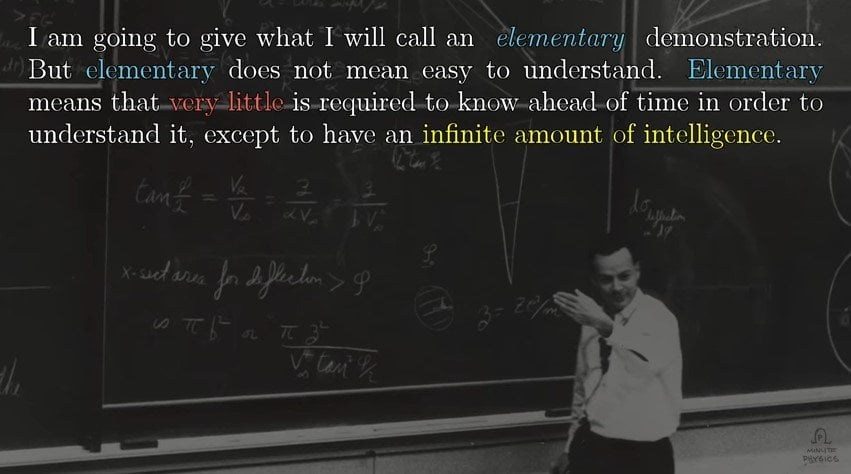This video recounts a lecture by Richard Feynman giving an elementary demonstration of why planets orbit in ellipses. See the excellent book by Judith and David Goodstein, “Feynman’s lost lecture”, for the full story behind this lecture, and a deeper dive into its content.
Q2 hedge fund letters, conference, scoops etc

Why Planets Orbit In Ellipses - Feynman's Lost Lecture (Ft. 3Blue1Brown)
Transcript
You may be aware that I'm a huge fan of the YouTube channel 3Blue1Brown run by Grant Sanderson Grant makes excellent videos about math and math the aspects and other topics. So I'm letting him take over my channel for today. Grant take it away.
A week ago I put out a tweet showing a peculiar place where an ellipse arises. But what I didn't mention is that this arbitrary seeming construction is actually highly relevant to a once last lecture by Richard Feynman on why planet's orbit in ellipses. The construction itself starts by drawing a circle and then choosing some point within that circle that's not at its center what we call an eccentric point and then draw a whole bunch of lines from this eccentric point up to the circumference somewhere and then for each one of those lines rotate it 90 degrees about its midpoint. And when you do that for all of the lines in ellipse emerges in the middle. Out of context this is a mildly pleasing curiosity but there's a much deeper form of satisfaction on its way. Once you understand the full story surrounding this front and center of that story is Richard Feynman who's famous in a number of dimensions to scientists. He's a giant of 20th century physics.
Winner of the Nobel Prize for his foundational insights in quantum electrodynamics among many other things to the public he's a refreshing contradiction to the stereotypes about physicists. A safe cracking bongo playing mildly philanderers nonconformist who is heavily Brooklyn accented voice you've probably heard either relaying some bit of no nonsense pragmatic wisdom about the only sensible way to view the world. Or else some wry joke told through a crooked smile. But to Physick students he was an exceptionally skillful teacher both for his charisma and his uncanny ability to make complicated topics feel natural and approachable. Many of the lectures he gave to a Caltech freshman course are immortalized in the now famous Feynman lectures his three volumes you can find for free online but not all of the lectures he gave made it into this collection. One in particular a guest lecture given on March 13th 1964 entitled The motion of planets around the sun survived only as an unpublished partial transcript with a smattering of notes buried in the office of one of Feynman's colleagues.
Until it was eventually dug up by Keltic archivist Judith Goodstein. Despite the absence of some crucial blackboard drawings to follow what Feynman was actually saying. Her husband David eventually reconstructed the argument of the lecturer which the two of them published in a book titled Feynman's last lecture conveying both the lecture itself and the surrounding story in a really beautiful way. Here what I'd like to do is give a more animated and more simplified retelling of the argument that Feynman was presenting. The lecture itself is about why planets and other astronomical objects orbit the sun in ellipses. It ultimately has to do with the inverse square law. The fact that the gravitational force pulling an object towards the sun is inversely proportional to the square of the distance between that object and the sun. But. Why. How exactly does that law give rise to an eclipse of all shapes. Of course the gravitational attractions.






